
Participatory approaches
Farmer participation and breeding rice for rainfed rice environments
.gif)
To describe the need for farmer paticipation in rice breeding
To clarify the social science component and the plant breeding component in participatory plant breeding (PPB)
To describe farmers’ criteria for selecting rice varieties
To explain how to use attitude, skills and knowledge to obtain quality information and effective cooperation from farmers
To describe appropriate interview techniques to facilitate group discussions or individual interviews
1. Why involve farmers in rice varietal evaluation and selection?
While classical breeding has been successful in favorable rice environments there has been limited impact in unfavorable rainfed environments.
Despite the many released rice varieties, adoption rates by the farmers remain low.
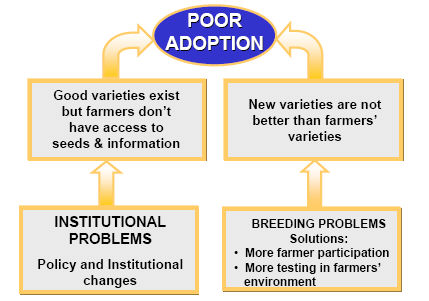
Possible reasons for poor adoption of modern varieties in rainfed environments
Often the researchers do not understand the farmers’ needs. They assume that improved productivity (yield) is enough to ensure the adoption of a new variety by the farmers.
There is a huge variability in rainfed areas. Farmers seldom adopt developed technology packages. Farmers will rather ADAPT than ADOPT technologies as they like to experiment. Farmers often lack access to new technology options and information about the benefits and limitations of the options.
-->There is a lack of innovative methods in technology transfer and scaling up.
2. What is the goal of "participatory plant breeding" (PPB)?
To increase the adoption of improved rice varieties suitable for rainfed ecosystem and hence increase food (rice) security of the resource poor households and communities.
3. The social science component in PPB
Participatory Plant Breeding involves outside its plant breeding component also a social science component.
For example:
Select and characterize the target research site (biophysical, social and economic) and typologies of farmers, gender roles
Understand how rice fits into farmers’ cropping/farming systems and its importance in the livelihood systems
Identify past and current rice varieties grown by farmers according to specific land types
Identify farmers’ constraints in adopting released varieties and understand selection criteria of farmers (gender, social groups, ethnicity)
Facilitate and assess farmer participation in “mother-baby” trials
Facilitate diffusion of Participatory varietal selection (PVS) lines in the community (scaling up)
Assess the impact of “farmer/community participatory approach” and adoption of lines evaluated through PVS
What are criteria when selecting research sites?
These sites should represent the major rice ecosystem with the problem of concern (submergence prone, drought prone, salt-affected, flood prone) for the breeding program
These sites should have an extensive rice area wherein research can make an impact
Accessibility to roads and other infrastructure is important
On-farm trials should be visible to other farmers in the community
4. At what stages of the breeding process can farmers be involved?
Participatory Varietal selection (PVS)
"Mother” trial – Researchers test advanced lines (15-25 fixed) on-farm and on-station. Groups of farmers rank rice lines.
“Baby trial” – Farmers test lines from “Mother” trials on their fields using their level of management and rate performance
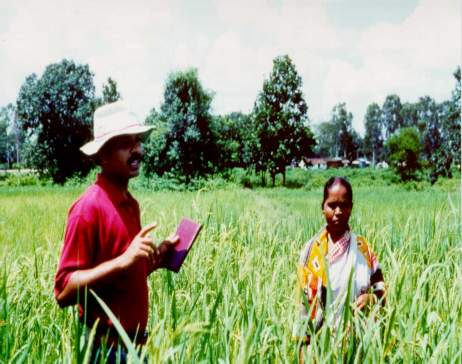
Eliciting farmers’ selection criteria of rice lines
managed by farmers on their own fields –”Baby” trials
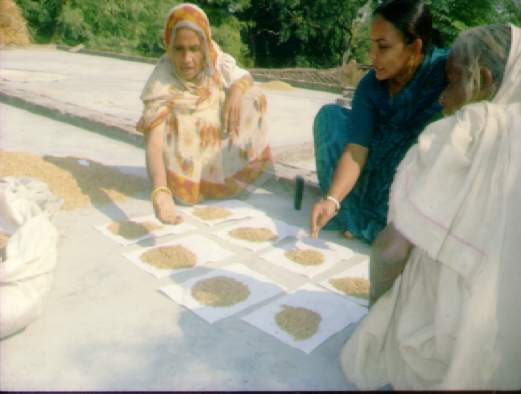
Assessing the post harvest qualities of PVS lines
Participatory Plant Breeding (PPB)
Farmers and breeders select plants from segregating materials – not uniform maturity
Evaluate materials when fixed
Sensory Evaluation
Farmers’ ranking according to taste and cooking quality
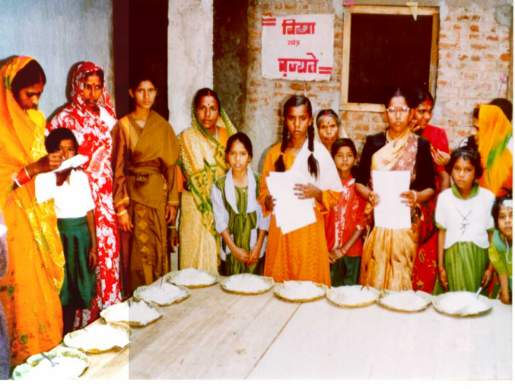
Assessment of cooking quality of rice
...
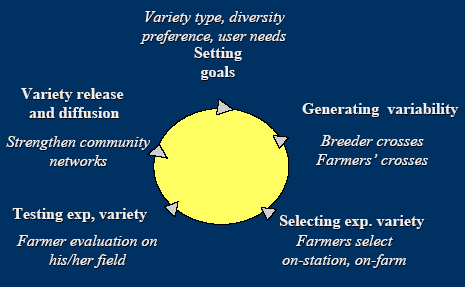
Plant breeding stages wherein farmers can participate
5. What are the farmers’ criteria when selecting rice varieties?
Recording farmers’ assessments of new varieties gave the following results:
Suitable or adapted to their land types and rainfall patterns
lowlands - long duration photosensitive varieties
uplands - early and medium duration, photo-insensitive
Can withstand drought, submergence, floods, problem soils (salinity)
Yield (stable or higher than varieties farmers use)
But also:
Quality (size, color, shape and texture of grain, eating, cooking, aromatic, glutinous, color); left-over rice stays soft, good for rice wine, good for making other rice products (puffed rice)
Good for livelihood uses (straw for animal feed, roof)
Should fit into the cropping/farming systems
Requires low inputs
Demands high price in the market
Example of a farmers’ assessment
Different socio-economic groups, gender, ethnicity may have different criteria:
Social groups
Large/Upper caste farmers want fine grains for the market while small/marginal/lower caste farmers want coarse grains which stays longer in the stomach and want varieties where the left over rice remains soft.
Gender – determined by gender roles
Men want high yields, resistant to pests and disease
Women want varieties suitable for rice products, varieties easy to thresh, varieties that can compete with weeds, the quality and quantity of straw should be good for animal feed. It has to have a high milling recovery, the rice should expand after cooking; and other quality traits
Ethnicity
Good for making rice wine, aromatic and glutinous, black rice, good quality for special occasions, gifts...
6. How to investigate the impact of farmer participation in breeding programs?
Evaluate resulting rice diversity in farmers’ fields
Assess changes in no. of farmers growing specific varieties, area grown to different varieties by land type, rice productivity, rice income
Assess adoption rate of introduced rice varieties
Assess attitude changes of farmers, extension workers and researchers
Document farmers’ perceptions on PVS and impact on their livelihood and well-being
Access to quality seeds and establishment of community efforts e.g. seed banks, self-help groups?
No. of released lines under PVS Access to quality seeds and establishment of community efforts e.g. seed banks, self-help groups
No. of released lines under PVS?
Benefit cost analysis of conventional vs. participatory approach?
Empowerment of farmer/communities/women farmers?
Institutionalization of participatory approaches in plant breeding in universities, research institutions?
7. How can non-social scientists obtain quality information and effective cooperation from farmers?
Some tips:
Attitude
Be willing to learn and not to preach
Observe local protocol and norms (consider gender, ethnicity, caste, wealth) groups
Develop and show interest in farmers’ farming practices
Communicate to express and not to impress
Build trust and a mutually beneficial working relationship
Avoid non-verbal messages
Be respectful with farmers’ time
Skills
Listen actively
Observe closely and systematically
Learn and use the local language
Probe to add depth to farmers’ response
Inquire and record as neutrally and value-free as possible
Make documentation recording as systematic and unobtrusive as possible
Facilitate farmer community meetings and explain roles, decision-making, ownership, degree and type of participation, sharing of inputs
Knowledge
Be familiar with target sites and environment (biophysical, socio-economic, cultural, political)
Learn farmers’ indigenous knowledge, needs, criteria, and preference, varieties they used to grow and prefer to grow
Understand farmers’ local concepts, criteria & measures
Use triangulation and gather information from diverse key informants
Appreciating Farmer’s Opinions
Use body language to show interest
Use encouraging words or gestures, head movements indicating assent
Use open-ended questions that invite participation
Rephrase what you’ve heard to show that you’re listening and that you understand
Request more conciseness and information on what you heard
At appropriate points, summarize what’s been said without distortion
Listening to the Farmer (Dos)
Give farmers time to respond
Sit comfortably, possibly on the same level with them
Make eye contact (as far as culturally acceptable)
Smile, have a sense of humor
Maintain a relaxed body position
Lean forward intently
Listening to the Farmer (Don’ts)
Get impatient with or interrupt the farmer
Contradict the farmer or point of finger to face
Show disapproval of farmers’ statement, even when disagree
Express judgement of what’s being said
Completely ignore women
Give the farmer advice during the interview
Convey boredom, verbally or nonverbally
8. How to do group discussions or individual interviews?
Pay courtesy to village leader
Explain the objectives of the project and seek permission to conduct interviews
Greet the farmers. If necessary interview key informants, separate social groups
Introduce yourself and your team
Explain to farmer why you are conducting the interviews. Build rapport.
Start with the phrase “We want to learn” from you
Avoid bringing thick questionnaires
9. How to facilitate group meetings?
Stop any individual from dominating the meeting
Encourage contributions from all farmers, especially the women
Guide the meeting towards its goals
Manage the pace of the meeting to maintain farmers’ interest
Assign a recorder and facilitator in the meeting
If possible, provide light snacks during the meeting
Summarize the results of the discussion
-->And remember to use the open-ended and probing questions
Type of Questions
Leading – normally imply the kind of response expected
Direct – aimed at obtaining specific information
Open (divergent) – give the interviewee free rein of expression by not explicitly directing his/her response
Open ended questions (examples)
Can you tell me more about this?
What would be an example of that?
What are some reasons for that?
Could you help me understand this better?
How you any other ideas about this?
How do you feel about that?
How do you think other farmers would feel about this?
How would you describe this?
What are the positive and negative traits of this variety?
Probing = a technique that
Combines good listening with asking questions which direct the flow of the interviewee’s spontaneous comments unobtrusively
Checks understanding of the interviewee’s point of view
Checks consistency of interviewee’s answers
By: Mirror technique (restating), Asking questions to confirm, Repeating a comment made earlier, Asking for clarification, Paraphrasing, Admitting uncertainty,...
Probing gives you more information than what was first offered
For example, the following was asked:
Why do you prefer this variety?
What do you like/dislike in this variety?
|
The answer you get... |
How you probe for more information... |
|
It has high/low/average yield |
How high is high/low/average compared to preferred local variety? |
|
It has high market demand |
Why high market demand? What qualities do consumers look for? |
|
Farm laborers prefer it |
Why do farm laborers like it? |
|
We are happy with the duration |
Why are you happy with the duration? What is maturity period? Why do you like early varieties? |
|
It is easier to grow
|
How can you tell it is easier to grow? |
|
It fits our cropping system |
How does it fit in your cropping system? What crops do you grow or want to grow before and after rice? |
Let's conclude
The benefits from farmer participation are:
Adaptation of varieties on farmers field
Suitability of varieties to farmers condition and needs
Inclusion of farmer’s own innovation and local knowledge
Farmer participation in breeding can improve the selection of suitable varieties for complex rainfed environments because
farmers’ are given the opportunity to screen new varieties on their specific environment rather in controlled experiment stations;
farmers’ selection criteria for rice varieties are better understood by breeders
Meeting farmer needs may be better tackled by creating different varieties rather than trying to produce multi-purpose varieties
Next lesson
This concludes this course. Please have a look at the contributors of the course and send feedback to IRRITraining@cgiar.org if you have ideas to edit or improve this course.
